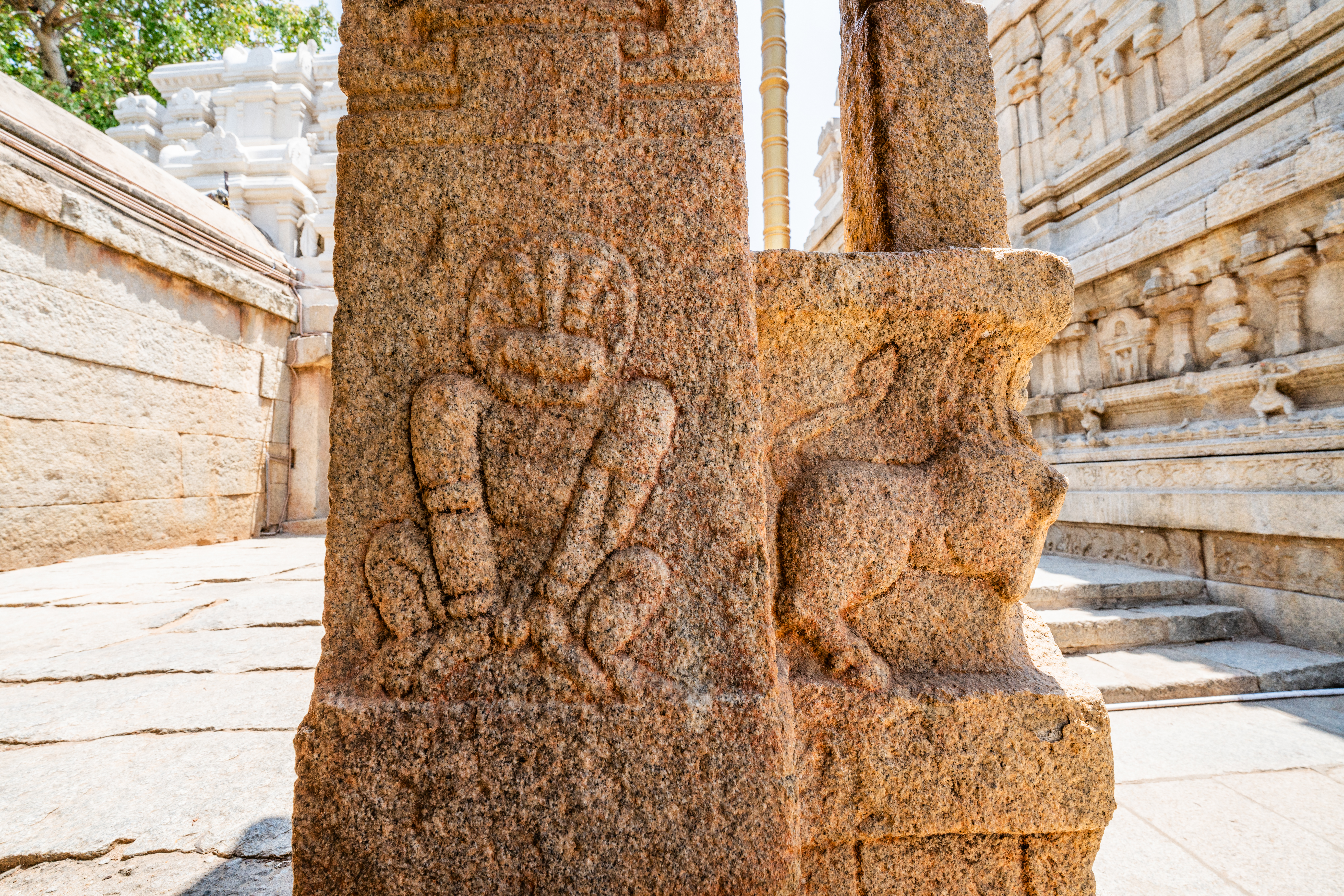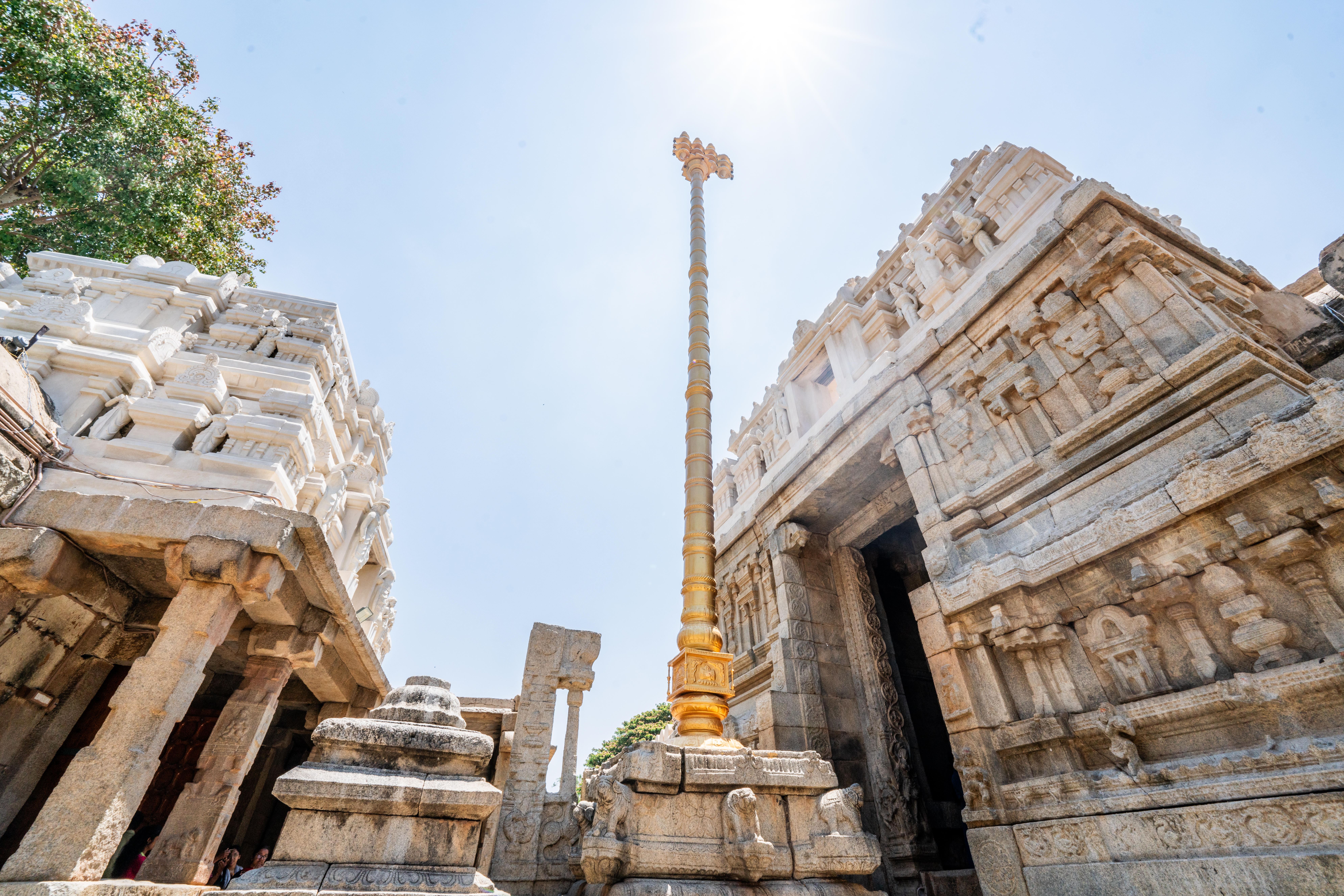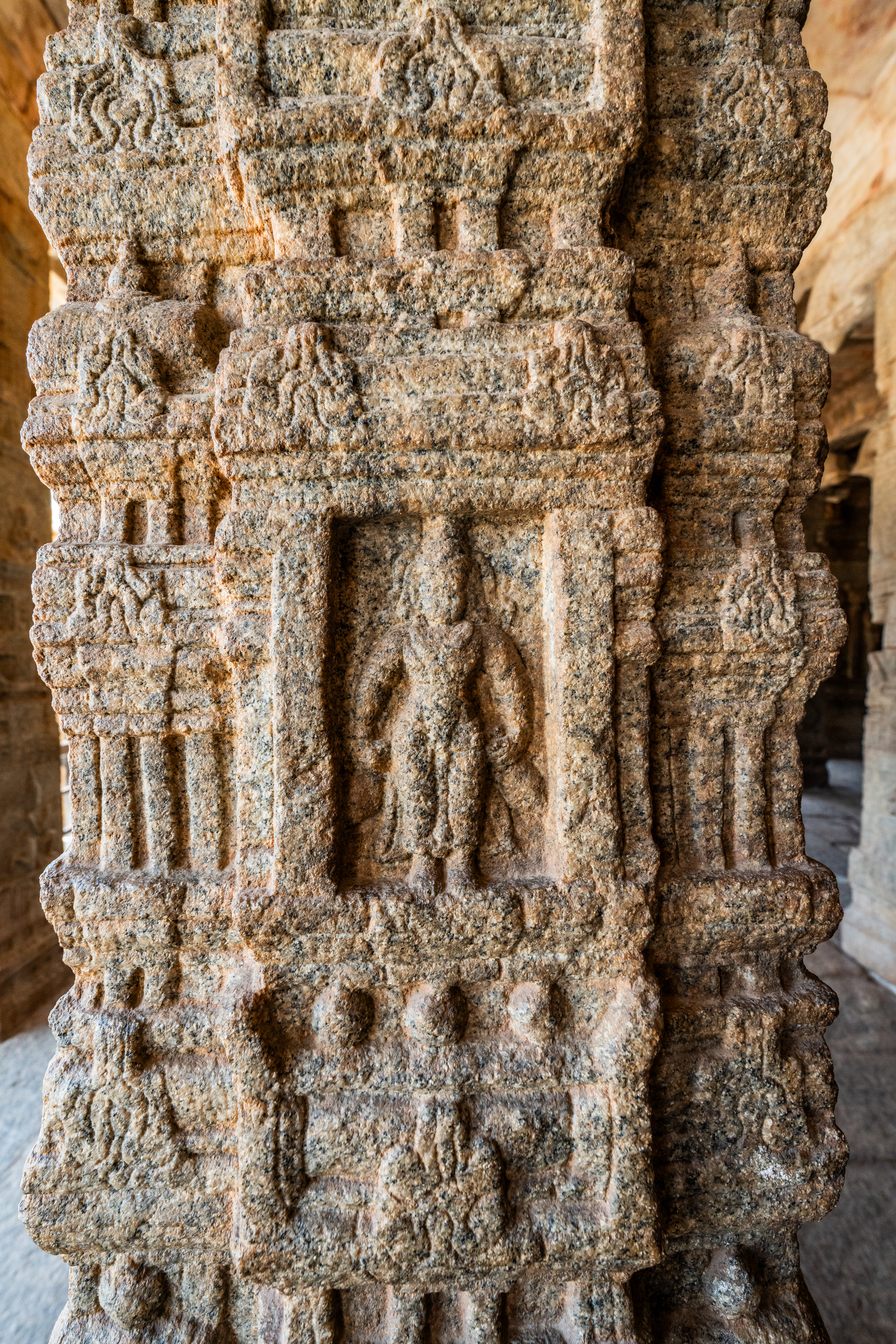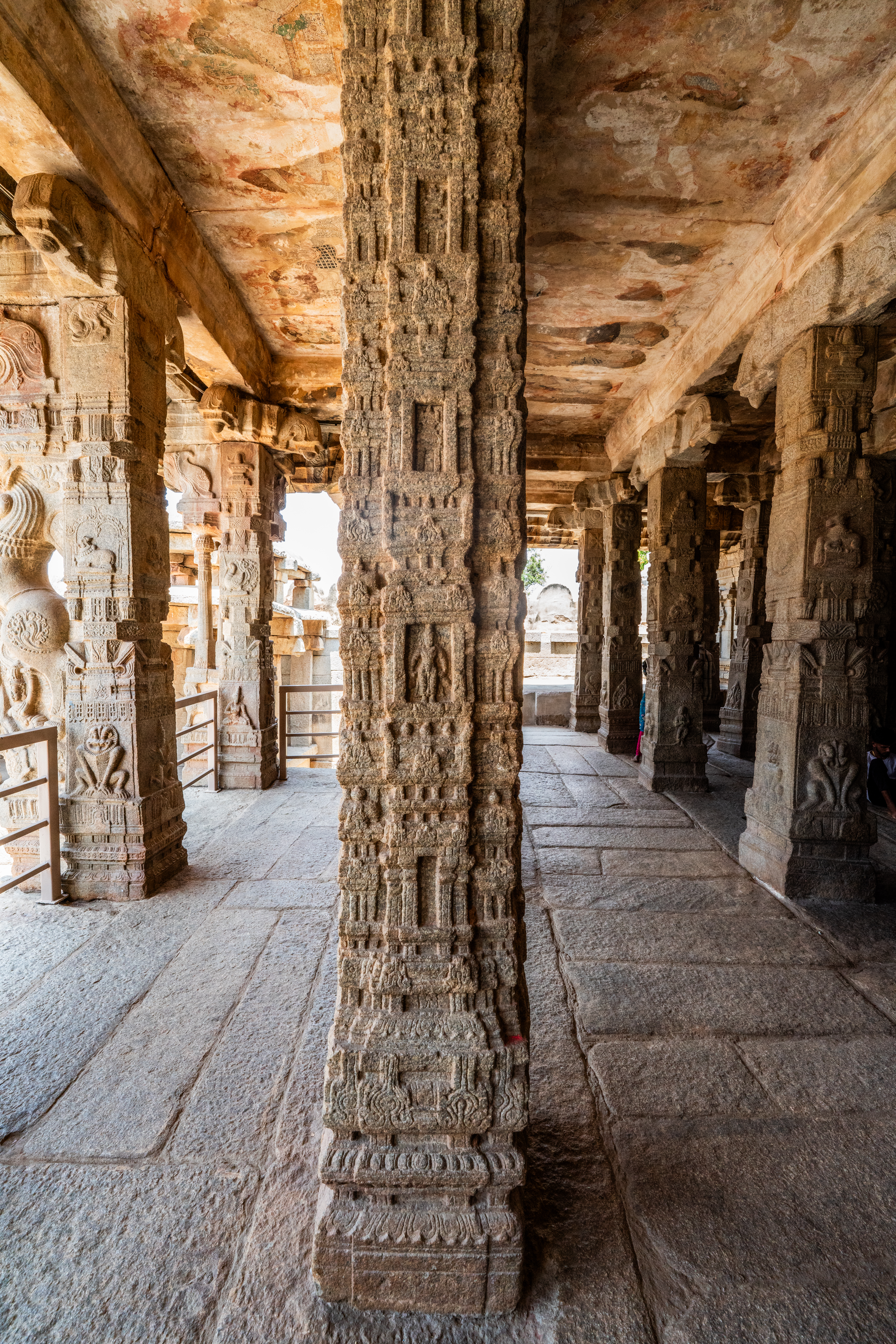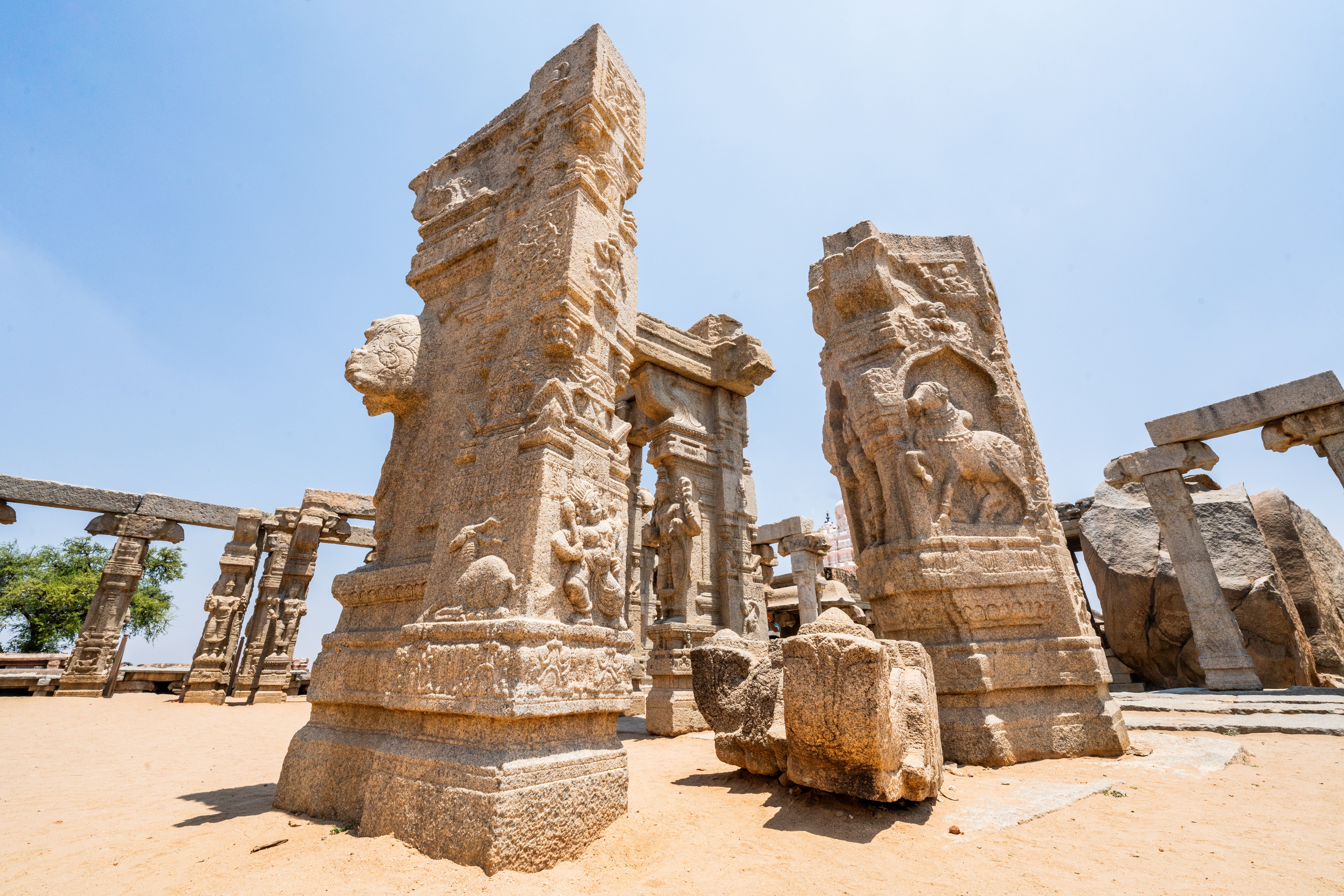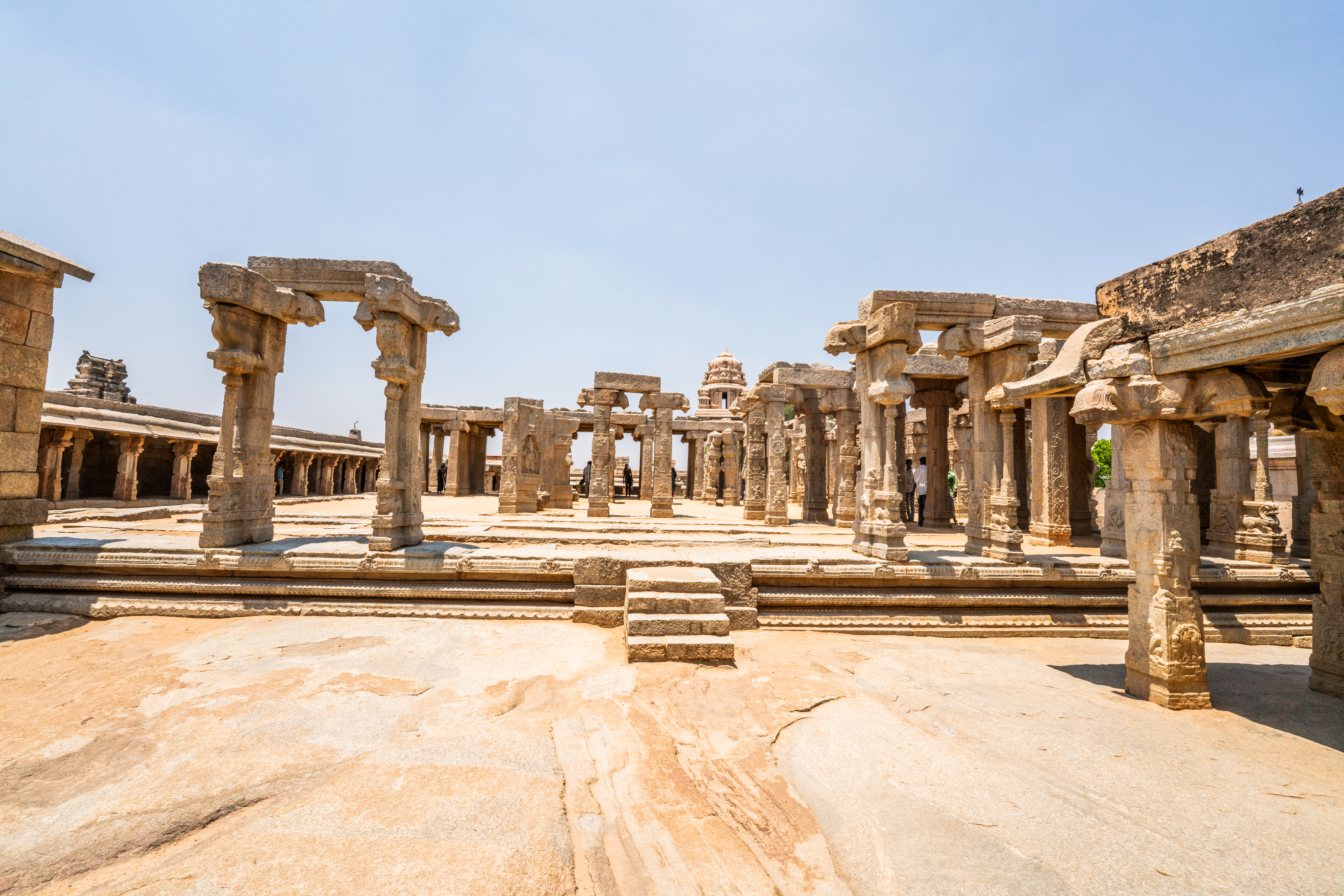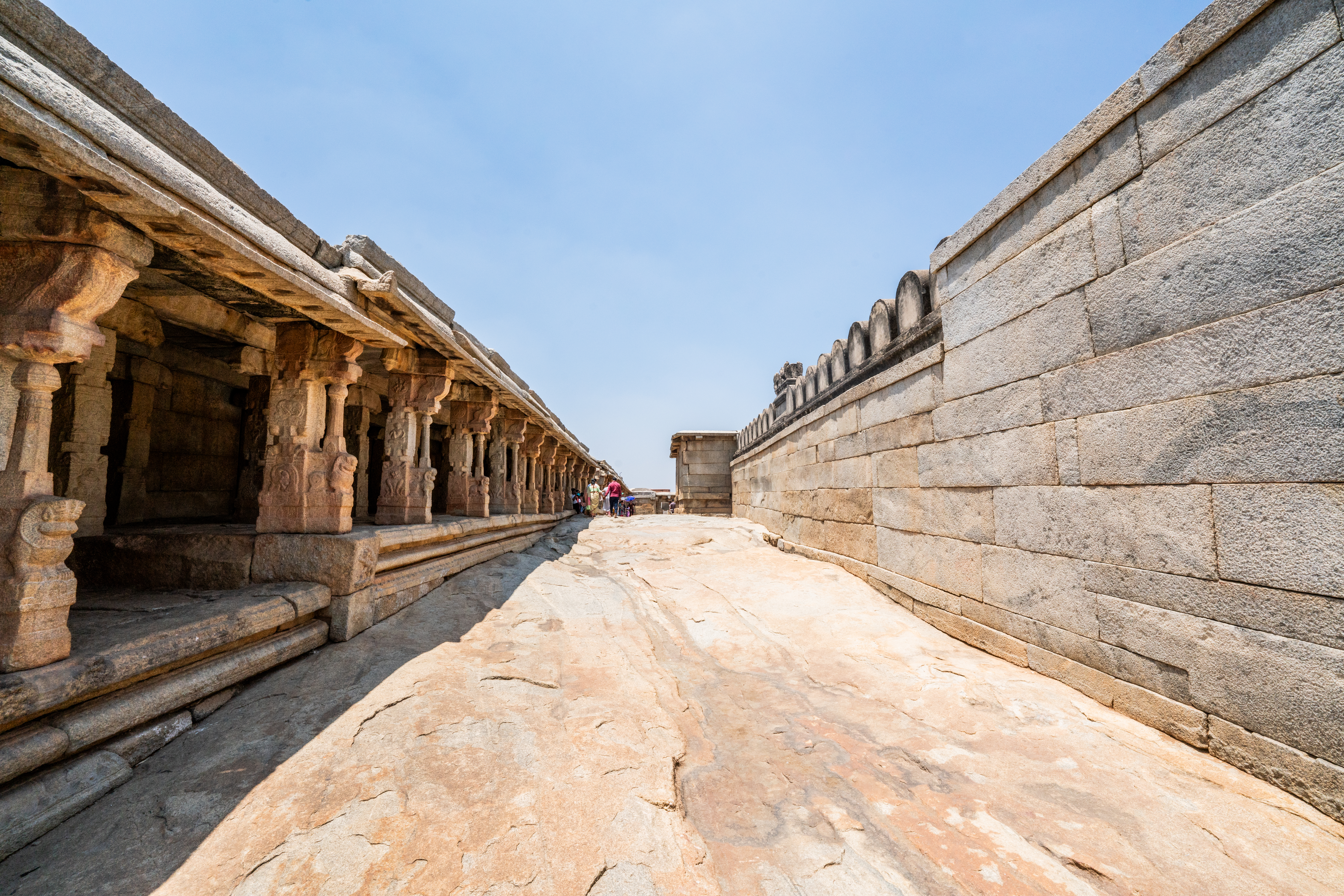Lepakshi Temple, also known as Veerabhadra Temple, has a rich history spanning three distinct periods from 1100 A.D. to 1800 A.D. Between 1350 and 1600 A.D, the kings of Vijayanagara added some of its most remarkable elements, including inscriptions from the reign of Achyutaraya Maharaya in the 16th century. Architectural Marvels: The entire temple, built in the trikuta style, rests on Kurmasaila, a low hill shaped like a tortoise. A short distance from the main temple stands a magnificent seated Nandi, one of the largest monolithic structures in India, adorned with ornaments, garlands, and bells. Facing the Nandi is the Nagashivalinga, a massive basaltic Shivalinga canopied by a seven-hooded Naga, creating a stunning visual. Another notable feature is the colossal Ganesha, carved into a boulder with a rock canopy supported by pillars. These grand structures highlight the exceptional skills of the architects and craftsmen of that era. Lepakshi Temple's name is associated with two legends, each adding to its rich history and cultural significance. The most popular legend, the Legend of Jatayu, associated with the Ramayana. It is the story of a noble eagle Jatayu, who attempted to rescue Sita from the demon king Ravana. Wounded by Ravana, Jatayu fell into the village of Lepakshi. When Lord Rama found the injured bird, he lovingly said, "Le Pakshi," which means "Rise, O Bird" in Telugu. The presence of a gigantic stone footprint within the temple complex, believed to belong to Sita, further embellishes this story. Historical Account of Virupanna and Veeranna: The construction of the Lepakshi Temple is attributed to brothers Virupanna and Veeranna, who served as officers in Achyutaraya's court. After Achyutaraya's death, his son-in-law ascended the throne, as Achyutaraya had no sons. During this time, some courtiers maliciously spread a rumor that Virupanna had embezzled royal funds to build the temple. Incensed by the accusation and the king's subsequent order to have him blinded, Virupanna preempted the punishment by gouging out his own eyes and flinging them against the temple wall. Remarkably, centuries of wind and rain have left two spots with blood-like stains on the walls, suggesting that the name Lepakshi originates from the Telugu words "Lepa" and "Akshi," meaning "blinded eye." Local guides confirm that the British government conducted a chemical analysis last century, which confirmed the stains were indeed from human blood. This tragic event halted the construction of the Kalyana Mandapa, leaving it unfinished to this day. These intertwined legends and historical events contribute to the temple's mystical aura and its significance as a monument of cultural heritage.
|
To Be Updated
